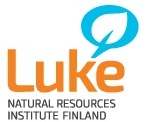Young Swedes keen to describe their future forests

Students answering the survey. Photo: Desiree Mattsson
by Maria Riala and Tuomas Nummelin (EFINORD)
What do young Swedes want from the forests of future? Will they be active in the forest, or will they have a more urban life-style? Will they value forests as a natural resource? Will they be using products derived from forests?
This is what we set out to discover in our research project, which is joint effort of EFINORD and Future Forests research programme. This study complements other research done in the Future Forests programme about stakeholder wishes for future forest. The stakeholders’ visions for the future forests can be found here. Our study focuses on the views of young people, because they have often been ignored in the discussions about the role of forest in Sweden. Their views should be charted, because they will be making decisions concerning forests and possibly using the forests in the future.
In December 2014, we set up stands at Umeå University and SLU to ask students what they want from the future forests in Sweden. During the week we were there, we collected around 1000 answers. We used an online form, which offered a more interactive experience for the respondents than a traditional survey would have done. We got a very even gender distribution, with little over a half of men. Around four fifths of the respondents were under 25, so they will potentially deal with Swedish forests for a long time in the future. They also represented different faculties, from forestry and natural sciences to social sciences and arts. Thus, we will be able to compare and contrast the thoughts of students from different backgrounds. 38 per cent of them stated that they or their family owns forest, which indicates an interest in their future.
The young Swedes do recognise what forest looks like. Interestingly, clear cuts were thought to look less like a forest, and they were also the least appealing environments for the students. The students preferred a photo showing a fell environment, but also a picture of a park appealed to many respondents.
The preliminary analysis of results suggests that there will be tensions and competitive uses for forests in Sweden. While some respondents were happy to have economically productive forests, others required untouched forests with high biodiversity values. Some suggested new and improved products which could be derived from forests, while others thought that forests should not be just sources of products. There was also a high variety of activities people thought they would do in the forest. While traditional activities, such as picking berries or mushrooms and outdoor sports, were popular, there were also mentions of newer activities, such as relaxation, meditation, and collecting inspiration.
The full analysis of the data will be completed this year, and the results will be publicised in different channels. We also plan to collect a comparable data set in Finland this year, which will enable us to compare the results between two Nordic countries. Natural Resources Institute Finland (Luke) will be responsible for data collection in Finland.






Comments
Post new comment